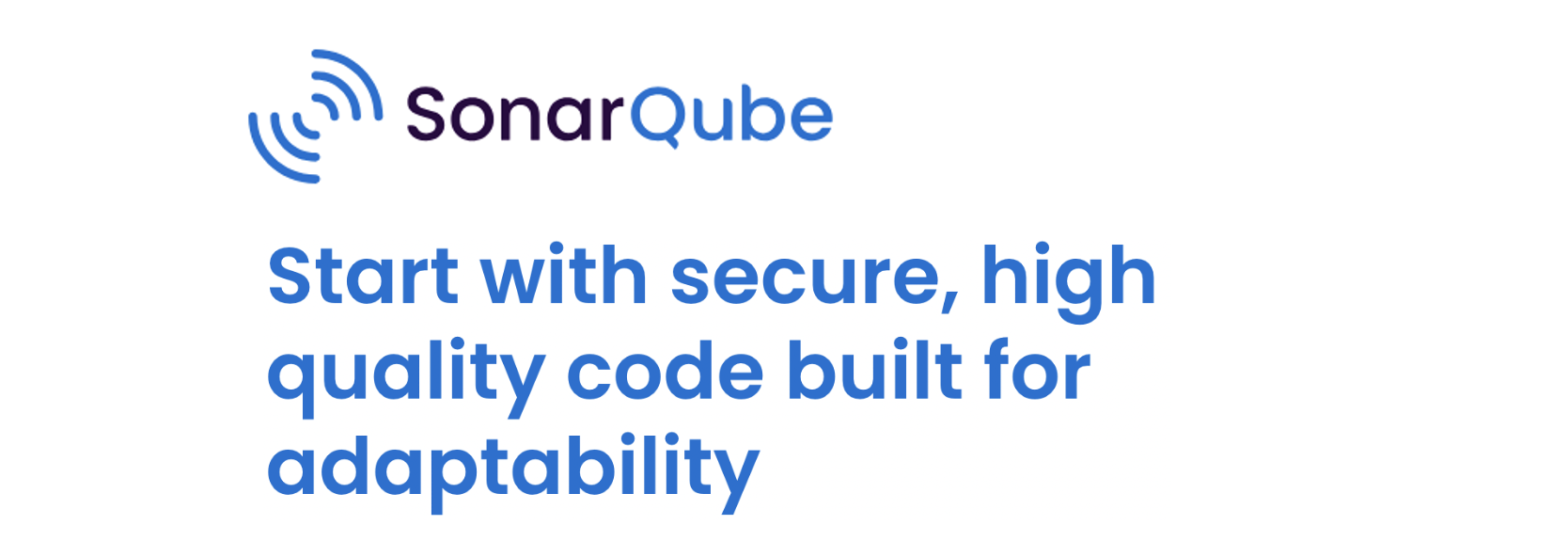SonarQube: From ad‑hoc code reviews to measurable quality in every release

With SonarQube, we catch issues directly in pull requests and stop them before customers notice — thanks to quality gates on every PR.
Code quality as a business-critical factor
Everyone talks about the importance of code quality—but in reality, features and deadlines often get priority over sustainable development. The consequence is technical debt, bugs leaking into production, and rising costs with every release.
At Sparkhouse, we know code quality isn’t a “nice to have” but a strategic concern. With SonarQube integrated into your delivery flows, quality and security become part of everyday work—not a side project.
From reactive troubleshooting to proactive quality assurance
With SonarQube, the focus shifts from after-the-fact checks to automated, continuous quality assurance. Analysis runs automatically in your pull requests and pipelines, provides instant feedback, and establishes a shared standard the whole team can follow.
The impact is clear:
-
Fewer defects reach production.
-
Less time spent on manual code reviews.
-
Consistent coding standards regardless of team or repository.
Why act now—not a year from now
The earlier you catch weaknesses, the cheaper they are to fix. Building quality into the process means faster releases, fewer incidents, and less technical debt over time. It also strengthens trust with customers, partners, and auditors—especially when you can show measurable KPIs improving every sprint.
One example: at a retail company we saw a 40% decrease in production bugs in just three months after introducing SonarQube.
What SonarQube is—and what it means in practice
SonarQube analyzes code for bugs, vulnerabilities, code smells, and duplications—with support for 30+ languages. It integrates with your CI/CD so every commit and PR is checked automatically.
In practice, you set a quality gate—a quality threshold—that code must pass before it can be merged. This makes quality measurable, objective, and consistent.
Which KPIs matter?
For code quality to be business-relevant, it needs to be measured. We recommend, among others:
-
Share of PRs that pass the quality gate without manual exceptions.
-
Trend for bugs, vulnerabilities, and code smells over time.
-
New Code covered with 0 known vulnerabilities.
-
Duplication percentage and test coverage on new code.
-
Median time to remediate findings (MTTR).
Common pitfalls—and how we avoid them
-
Big-bang rollout: too many rules at once. We start with the New Code strategy and tighten gradually.
-
Unclear ownership: we help define responsibilities in the PR flow and tie findings to sprint goals.
-
Dashboards without follow-up: we establish routines in dailies and sprint reviews.
-
No training: we make sure the team can interpret and address findings.
Who is this for?
-
Product teams that want to raise quality without slowing delivery.
-
Organizations in regulated environments that need traceability and audit-ready documentation.
-
Companies with high production-incident costs that want to reduce cost per release.
Our offering: SonarQube Quality by Sparkhouse
We combine SonarQube with experience from real-world DevOps environments. That means we don’t just install a tool—we make sure it delivers impact from day one.
What’s included
-
Integration into pipelines and PR flows (Azure DevOps, GitHub, GitLab, Bitbucket).
-
Sensible quality gates tailored to your goals and maturity.
-
Role-specific dashboards for developers, tech leads, and leadership.
-
Configuration for all your languages and frameworks (30+).
-
Advice on deployment options (on-prem or cloud) with GDPR-safe handling.
-
Training and ways-of-working so teams understand and act on findings.
What Sparkhouse does
We have experience from complex delivery environments and know the balance between “perfect code” and “deliver value now.” That’s why we set reasonable quality gates, integrate SonarQube with your existing tooling, and create visualizations that both developers and leadership understand.
The result: faster feedback, fewer bugs in production, and a culture where code quality is a given.
How we start—fast and low-risk
We work iteratively in short steps to deliver value quickly:
-
Vision Call (20 min) — we map goals, current state, and priorities.
-
Audit (1 week) — inventory of repositories, pipelines, and policies plus a roadmap and quality gates.
-
Proof of Concept (2–3 weeks) — we hook into a prioritized flow, set KPIs, and demonstrate real impact.
Next step—book your Vision Call
Want fewer bugs by the next sprint?
Book a free Vision Call (20 min) where we review your current situation and propose a plan for your repositories, pipelines, and release cadence.
Get in touch today—and we can show practical results within a few weeks.
Read more
More blogs
All logs
Agentic Commerce reshapes commerce so only companies with stable, traceable information flows stay visible in customers’ agent-driven journeys
Read more
Serverless Azure integrations: manage rules as config, launch flows without code and boost AI visibility while cutting order costs.
Read more
Full-time assignment as a full-stack developer where you own features from UI to API. Secure data-sharing portal, measurable impact and long-term product development.
Read more